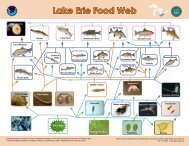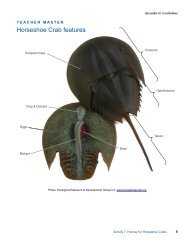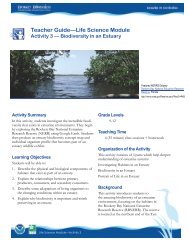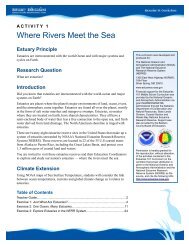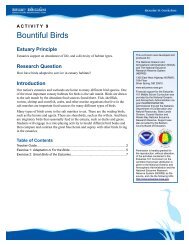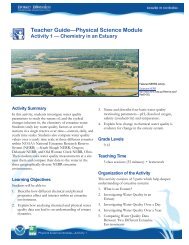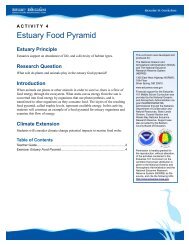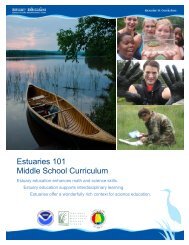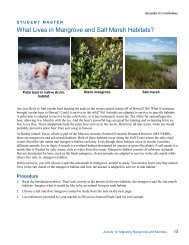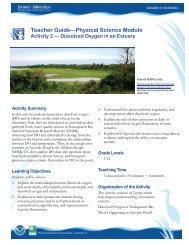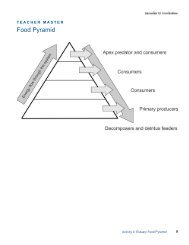Teacher GuideâEarth Science Module - Estuaries NOAA
Teacher GuideâEarth Science Module - Estuaries NOAA
Teacher GuideâEarth Science Module - Estuaries NOAA
Create successful ePaper yourself
Turn your PDF publications into a flip-book with our unique Google optimized e-Paper software.
dissolved oxygen, and pH of the water in theestuary if the hurricane dumped 6 inches of raininto the surrounding watershed?What impact would a high storm surge have?12. Have students complete Part 3 of the Student Worksheet— Extreme Weather in an Estuary, using theStudent Data Sheet 2 — Impact on an Estuary by anExtreme Weather Event.13. Review and discuss the Part 3 tasks and questions.Check for UnderstandingDiscuss the following with students:What were the effects of a major storm event in theNorth Carolina NERR? What caused the change in each of the four abioticparameters studied in thisactivity? Why is there a difference in the time it takes for thedifferent parameters to return tonormal? What effects do you think the storm might have had ondifferent plants and animals in the estuary?Optional Extension InquiriesHurricane Katrina struck the southern coast of the UnitedStates in late August 2005. Show an image of Katrina as ithit the US on Aug. 29.Locate the Weeks Bay NERR on a map for students ortake a screen shot of Weeks Bay with Google Earth.Ask students to sketch what the salinity, pH, DO, andturbidity graphs might be look like for the Weeks BayNERR for the period of August 29 to September 4.Download data from the SWMP Web site for a stationin Weeks Bay during the given time period and give orproject the graphs so students to compare theirpredictions with the actual data.Earth <strong>Science</strong> <strong>Module</strong>—Activity 44



